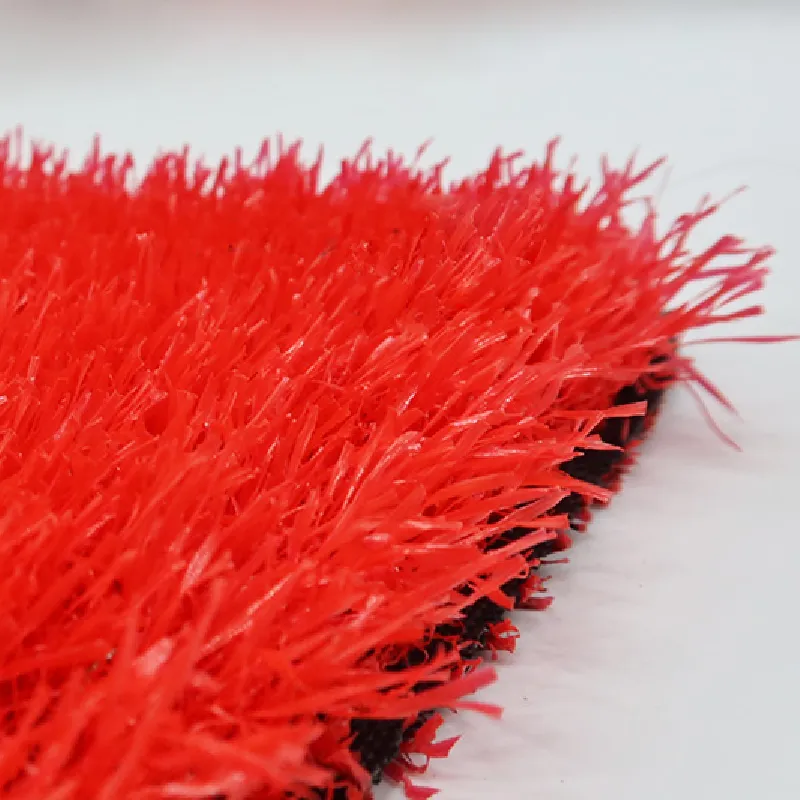Welcome to Hoyarn
Call Us Any Time:+86 19801805999
Email Us: info@hoyarn.cn

- Afrikaans
- Arabic
- Belarusian
- Bengali
- Czech
- Danish
- Dutch
- English
- Esperanto
- Estonian
- Finnish
- French
- German
- Greek
- Hindi
- Hungarian
- Icelandic
- Indonesian
- irish
- Italian
- Japanese
- kazakh
- Rwandese
- Korean
- Kyrgyz
- Lao
- Latin
- Latvian
- Malay
- Mongolian
- Myanmar
- Norwegian
- Persian
- Polish
- Portuguese
- Romanian
- Russian
- Serbian
- Spanish
- Swedish
- Tagalog
- Tajik
- Thai
- Turkish
- Turkmen
- Ukrainian
- Urdu
- Uighur
- Uzbek
- Vietnamese
laying down turf
Jan . 16, 2025 01:17 Back to list
laying down turf
Transforming a barren outdoor space into a lush, green sanctuary begins with the art and science of laying down turf. This practice, steeped in technique and precision, offers a straightforward way to achieve a beautiful lawn, irrespective of previous landscapes. Here, we uncover key insights to master the installation of turf, ensuring you cultivate a vibrant and durable lawn.
During installation, lay the turf in a staggered, brick-like pattern to minimize visible seams and enhance the lawn's visual appeal. Seams should be tight to prevent gaps that could invite weed growth or pest infestation. Using a lawn roller helps the turf make firm contact with the soil, eliminating air pockets and promoting seamless root integration. Following installation, immediate watering is paramount. Experts recommend watering deeply to encourage deep root growth, which is essential for drought resilience. The first few weeks post-installation are crucial for root establishment, so maintaining consistent soil moisture is necessary. However, overwatering should be avoided to prevent root rot and fungus development. As your turf settles, regular maintenance is critical. Mowing should not be attempted until the turf has rooted adequately, typically after a few weeks. Aim for a 1/3 cut on the grass height initially, progressively adjusting as the lawn establishes. Fertilization should follow a structured plan guided by the initial soil test results, ensuring your lawn receives required nutrients throughout its growth phases. Laying down turf is an investment in your home's outdoor aesthetic and environmental quality. With a methodical approach backed by expertise, the transformation to a lush, robust lawn is not only achievable but sustainable. By adhering to industry best practices and authoritative advice, you can cultivate a space that not only enhances your property's appeal but establishes a trusted legacy of quality and care.


During installation, lay the turf in a staggered, brick-like pattern to minimize visible seams and enhance the lawn's visual appeal. Seams should be tight to prevent gaps that could invite weed growth or pest infestation. Using a lawn roller helps the turf make firm contact with the soil, eliminating air pockets and promoting seamless root integration. Following installation, immediate watering is paramount. Experts recommend watering deeply to encourage deep root growth, which is essential for drought resilience. The first few weeks post-installation are crucial for root establishment, so maintaining consistent soil moisture is necessary. However, overwatering should be avoided to prevent root rot and fungus development. As your turf settles, regular maintenance is critical. Mowing should not be attempted until the turf has rooted adequately, typically after a few weeks. Aim for a 1/3 cut on the grass height initially, progressively adjusting as the lawn establishes. Fertilization should follow a structured plan guided by the initial soil test results, ensuring your lawn receives required nutrients throughout its growth phases. Laying down turf is an investment in your home's outdoor aesthetic and environmental quality. With a methodical approach backed by expertise, the transformation to a lush, robust lawn is not only achievable but sustainable. By adhering to industry best practices and authoritative advice, you can cultivate a space that not only enhances your property's appeal but establishes a trusted legacy of quality and care.
Prev:
Next:
Latest news
-
The Benefits of Artificial Turf for Indoors
NewsJul.15,2025
-
How Artificial Grass Suppliers Ensure Quality Products
NewsJul.15,2025
-
Artificial Grass and Pets: A Space for Relaxation
NewsJul.08,2025
-
Balcony & Outdoor Decoration with Artificial Grass
NewsJul.08,2025
-
Best Indoor Artificial Grass for Home
NewsJul.07,2025
-
Best Pet Turf for Dogs: Safe & Durable Artificial Grass Options
NewsJul.07,2025
Products categories








